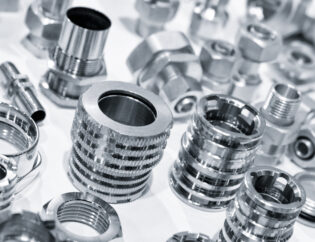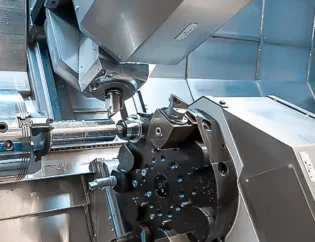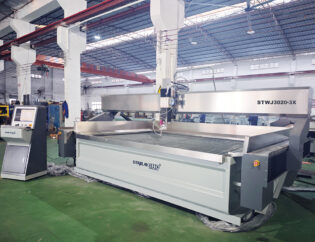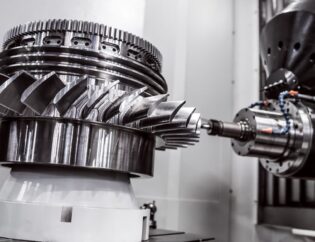Machining polyurethane is a critical process in various industries, from automotive to aerospace. This versatile material offers unique properties such as durability, flexibility, and resistance to wear, making it an ideal choice for numerous applications. Understanding how to effectively machine polyurethane can enhance product quality and performance, leading to significant improvements in manufacturing efficiency.
In this guide, readers will explore essential techniques and best practices for machining polyurethane. Topics will include selecting the right tools, optimizing machining parameters, and troubleshooting common challenges. By mastering these skills, manufacturers can achieve precise results and extend the lifespan of their polyurethane components.
Additionally, the guide will delve into safety considerations and maintenance tips to ensure a smooth machining process. Whether you are a seasoned professional or new to the field, this comprehensive resource will equip you with the knowledge needed to excel in machining polyurethane. Prepare to enhance your expertise and elevate your projects to new heights.
Machining Polyurethanes: A Comprehensive Guide
To most people, “machining” means transforming raw metal into a specific shape and size. However, wood, ceramic, and plastic can all be machined as well. Our clients in oil and gas, mining, manufacturing, and food processing have all discovered that cast polyurethane parts can also be machined into excellent products with a wide range of uses.
Understanding Polyurethane
Polyurethane (PU) is a versatile polymer used in various applications due to its unique properties. It can be formulated to achieve different hardness levels, making it suitable for various machining processes. Its elasticity, durability, and resistance to wear make it a preferred choice in industries such as automotive, food processing, and manufacturing.
Technical Features of Polyurethane
The following table summarizes the key technical features of polyurethane that are essential for machining:
| Feature | Description |
|---|---|
| Hardness Range | Typically ranges from 40A to 75D, allowing for various applications. |
| Thermal Conductivity | Lower than metals, which can lead to melting above 400°F. |
| Machinability | Can be turned, sawed, drilled, tapped, ground, and milled. |
| Tool Requirements | Requires sharp tools with specific geometries to prevent deformation. |
| Cooling Needs | Often requires coolants to manage heat during machining. |
| Chip Formation | Chips should be continuous strips for optimal machining efficiency. |
Types of Polyurethane
Polyurethane can be categorized based on its hardness and application. The following table outlines the different types of polyurethane and their characteristics:
| Type | Hardness Range | Common Applications |
|---|---|---|
| Soft Polyurethane | 40A – 60A | Gaskets, seals, and cushioning materials. |
| Medium Polyurethane | 70A – 90A | Rollers, wheels, and industrial parts. |
| Hard Polyurethane | 90A – 75D | Structural components and high-load applications. |
Machining Processes for Polyurethane
Machining polyurethane involves several processes, each suited for specific applications and hardness levels. Here’s a breakdown of the most common methods:
1. Milling
Milling is ideal for creating complex shapes and achieving tight tolerances. It is effective for polyurethane hardness ranging from 90A to 75D. The recommended tools include two-fluted end mills and single-point fly cutters.
2. Turning
Turning is used for cylindrical parts and requires high speeds, especially for softer polyurethanes. High-speed steel tools are preferred for their cutting efficiency.
3. Drilling
Drilling operations should utilize slow spiral drills to ensure efficient chip removal and minimize heat buildup. Sharp cutting edges are crucial for maintaining the integrity of the material.
4. Grinding
Grinding is essential for achieving smooth finishes. Carborundum grinding wheels with fine grain sizes are recommended for optimal results.
5. Sawing
Band saws are effective for cutting polyurethane, especially for larger pieces. The use of hook-type tooth blades helps maintain cooler operation and prevents melting.
Best Practices for Machining Polyurethane
When machining polyurethane, consider the following best practices:
– Tool Selection: Use sharp tools with appropriate geometries to minimize cutting resistance.
– Cooling: Employ coolants to manage heat and prevent melting.
– Clamping: Ensure proper fixturing to avoid distorting the material during machining.
– Chip Removal: Regularly clear chips to maintain machining efficiency.
Conclusion
Machining polyurethane presents unique challenges and opportunities. By understanding its properties and employing the right techniques, manufacturers can produce high-quality components for various applications. Companies like Mark Tool & Rubber Co. and ECOREPRAP offer specialized services to assist in the machining of polyurethane, ensuring that clients receive the best possible results.
FAQs
1. What is the hardness range of polyurethane?
Polyurethane hardness typically ranges from 40A to 75D, allowing for various applications.
2. What are the best tools for machining polyurethane?
Sharp tools with specific geometries, such as high-speed steel and carbide tools, are recommended for effective machining.
3. How does temperature affect polyurethane during machining?
Polyurethane has lower thermal conductivity than metals and may melt above 400°F, making cooling essential during machining.
4. What industries commonly use machined polyurethane parts?
Industries such as automotive, food processing, and manufacturing frequently utilize machined polyurethane components.
5. Where can I find more information on machining polyurethane?
Websites like www.marktool.com, www.practicalmachinist.com, knowledgecenter.mearthane.com, flyingprecision.com, and ecoreprap.com provide valuable resources and insights on this topic.









